Tucked away in the historic Asakusa district of Tokyo, the Japanese Paper Washi Making Experience offers a chance to dive into the age-old art of traditional paper craft. Participants become immersed in the intricate process, guided by an expert washi master as they craft their own unique pieces. From selecting custom colors to mastering the delicate techniques, this hands-on workshop promises an unforgettable glimpse into the rich cultural heritage that’s woven into every strand of washi paper. What secrets will the washi master unveil?
Key Points
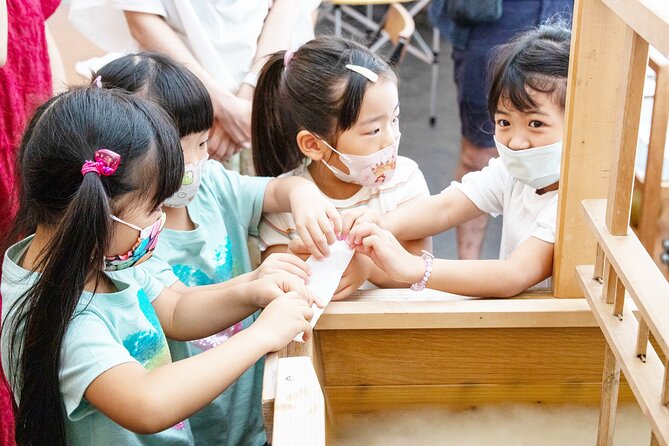
- Hands-on washi paper-making workshop located in the historic Asakusa district of Tokyo, offering participants the chance to create their own unique washi papers.
- Limited class size of 6 travelers ensures personalized attention and guidance from expert instructors in the traditional techniques of washi production.
- Participants learn about the 7th-century origins of washi and its significance in Japanese calligraphy, art, and home decor.
- The workshop provides all necessary materials and tools, including bamboo frames, wooden pulp beaters, and water basins, for a comprehensive washi-making experience.
- Customization options allow participants to personalize their washi creations using natural pigments, stamps, and freehand drawing techniques.
Overview of the Washi Making Experience

This Japanese paper-making experience in Asakusa offers a unique opportunity to learn the art of washi from a skilled master.
Participants can create four postcard-sized papers and one ochimizu paper, guided by the instructor’s expertise. The intimate class size, capped at six travelers, ensures personalized attention.
Situated in the historic Asakusa district, the workshop’s convenient location makes it easily accessible via public transportation.
Whether a seasoned artist or a curious beginner, this immersive experience promises to leave participants with a newfound appreciation for the intricate craft of traditional Japanese papermaking.
You can also read our reviews of more tours and experiences in Asakusa.
Learning About the History and Traditions of Washi
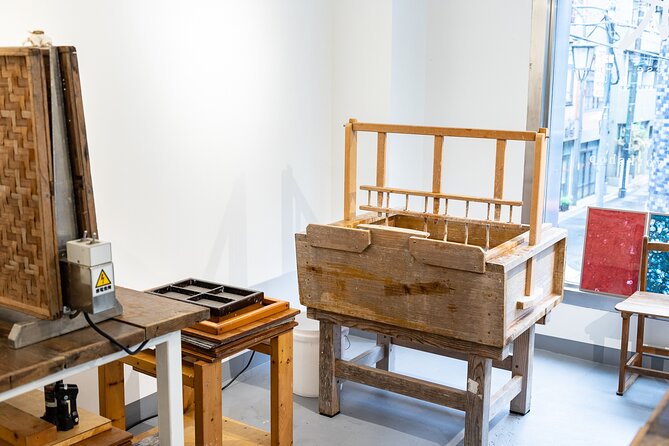
Washi, the exquisite Japanese paper, boasts a rich history rooted in centuries of tradition and craftsmanship. During the washi making experience, participants explore the fascinating origins and cultural significance of this revered art form.
| Key Washi Facts | |
|---|---|
| Origin | Dating back to the 7th century, washi was initially made from the inner bark of the mulberry tree. |
| Materials | Along With mulberry, washi can be crafted from bamboo, hemp, and other natural fibers. |
| Techniques | Traditional methods like hand-dipping and sheet-forming produce the paper’s distinctive texture and strength. |
| Significance | Washi holds deep cultural importance, used in everything from calligraphy to home decor. |
Participants gain a newfound appreciation for the meticulous craft behind each delicate sheet of washi paper.
Materials and Tools Used in Washi Making
The materials and tools used in the washi making experience come together to create the delicate yet durable sheets of Japanese paper.
Participants are provided with a bamboo frame, called a su, which helps shape the paper. Wooden pulp beaters, known as naginata, are used to break down the kozo, gampi, or mitsumata plant fibers.
A water basin, called a hikinoke, holds the fiber-infused water. Participants scoop this liquid onto the su, allowing the fibers to mat and form the unique washi texture.
With skillful techniques, each handmade sheet becomes a piece of functional art.
Step-by-Step Guide to Creating Postcard-Sized Papers
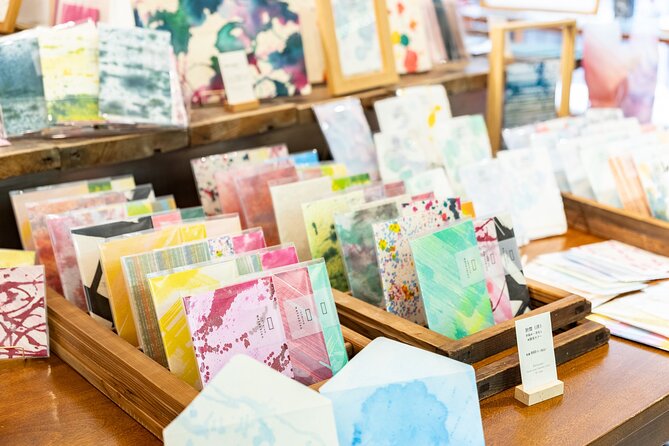
To begin the washi making experience, participants are first guided through the creation of four postcard-sized papers.
Under the washi master’s expert instruction, they carefully scoop the fiber pulp from the vat, distributing it evenly across the mold.
After pressing out excess water, they carefully remove the newly formed sheet, gently placing it on a felt mat to dry.
This process is repeated, allowing participants to craft a collection of uniquely textured washi papers.
Throughout, the washi master offers insights into the history and techniques of this traditional Japanese craft.
Crafting the Unique Ochimizu Paper
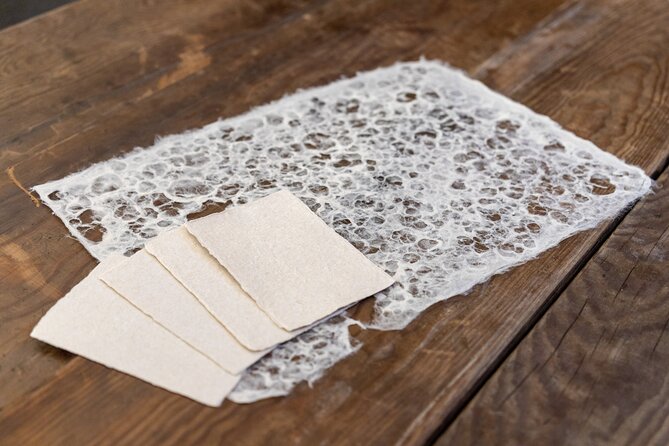
Following the creation of the postcard-sized papers, participants move on to crafting the unique ochimizu paper.
Under the washi master’s guidance, they take a fresh approach, using a special plant-based solution to create this distinctive type of washi.
Carefully pouring the ochimizu liquid onto a bamboo frame, they watch as the paper pulp forms a delicate, translucent sheet.
With each step, the group learns about the meticulous techniques that have been passed down for generations.
The final result is a stunning, one-of-a-kind ochimizu paper, a true testament to the artistry of traditional Japanese papermaking.
- Explore Sumo Culture: Tokyo Half-Day Walking Tour
- Origami Fun for Families & Beginners in Asakusa
- Sweets Making & Kimono Tea Ceremony at Tokyo Maikoya
- Mt Fuji :1-Day Private Tour With English-Speaking Driver
- Asakusa, Tokyo: Traditional Kimono Rental Experience at WARGO
- [30 Minutes] Asakusa Ancient Trip Plan by Rickshaw ~ Tour of Tokyo Sky Tree
Insights From the Washi Master’s Instruction
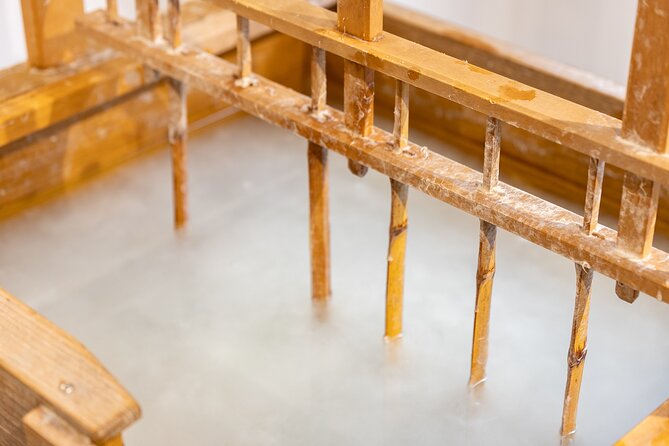
As participants enjoy the washi-making experience, the washi master’s instruction offers invaluable insights into the centuries-old traditions of Japanese papermaking.
Through their expert guidance, travelers gain a deeper appreciation for the intricacies and artistry involved.
The master emphasizes:
- The importance of patience and delicate handling when forming the paper pulp
- The significance of water quality and temperature in achieving the desired texture and transparency
- The meticulous techniques used to press, dry, and finish the unique ochimizu paper
These insights elevate the experience, transforming it into a meaningful cultural exchange.
Personalization and Customization Opportunities
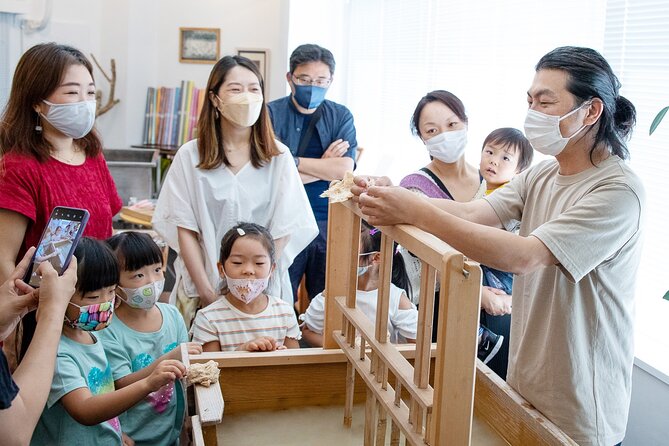
Participants have the opportunity to personalize and customize their washi paper creations during the experience. Using natural pigments and intricate techniques, they can design their postcards and ochimizu papers to reflect their unique style and preferences. The instructor guides them through the process, offering suggestions and assistance to bring their creative visions to life.
| Design Elements | Options |
|---|---|
| Color | Natural pigments, ink, dyes |
| Textures | Folding, layering, fiber inclusions |
| Shapes | Cutting, molding, layering |
| Patterns | Stamping, stenciling, freehand drawing |
| Personalization | Monograms, personal messages, imagery |
The end result is a one-of-a-kind piece of handmade washi paper to cherish as a memento of the immersive cultural experience.
Exploring the Asakusa Neighborhood After the Activity
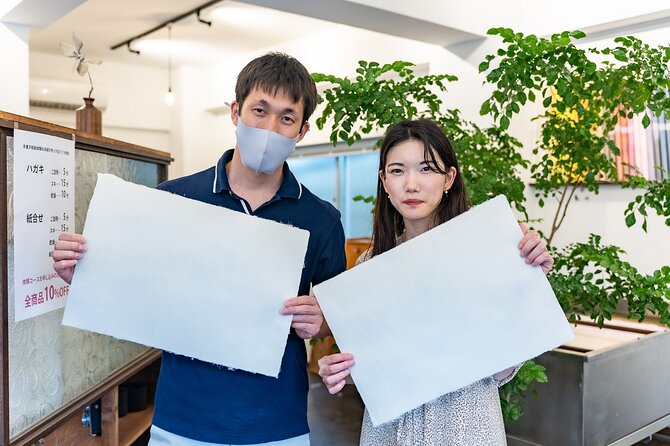
After the captivating washi paper-making experience, visitors to Asakusa can enjoy the vibrant culture and traditional charm of this historic Tokyo neighborhood.
Explore the iconic Sensoji Temple, one of the oldest and most significant Buddhist temples in Japan.
Wander through the lively Nakamise shopping street, lined with charming shops selling local crafts, delectable street food, and unique souvenirs.
Discover the hidden gems of Asakusa, such as:
- Sumida Park, offering stunning views of the Sumida River and the iconic Tokyo Skytree
- The Asakusa Shrine, a Shinto shrine with intricate architecture
- Local izakaya pubs, perfect for sampling Japanese cuisine and drinks.
Since You Asked
Can I Bring My Own Materials to the Workshop?
Unfortunately, participants can’t bring their own materials to this washi-making workshop. The experience is designed for you to learn from the master and use the provided supplies to create your own unique washi papers. All the necessary materials are included in the cost.
Do I Need to Have Prior Experience in Papercrafting?
No prior experience is necessary. The washi master will provide clear instructions and guide participants through the hands-on process of creating personalized washi paper, making it an accessible activity for both beginners and seasoned crafters alike.
Is It Possible to Make Extra Papers for an Additional Fee?
Yes, travelers can make extra papers for an additional fee. The washi-making experience allows participants to create 4 postcard-sized papers and 1 ochimizu paper. If they’d like to make more, they can pay extra to do so.
Can I Purchase the Tools and Materials Used During the Class?
Yes, you can purchase the tools and materials used during the class. The shop offers a 10% discount on store merchandise, so you can take home the items you used to continue your washi-making journey.
Are There Any Discounts or Package Deals Available for Groups?
The experience offers a 10% discount on store merchandise, but it doesn’t seem there are any special group discounts. However, the maximum group size is 6 travelers, so booking together could be an option to save slightly.
The Sum Up
The Japanese paper-making experience in Asakusa is a must-do for anyone fascinated by traditional crafts. Visitors don’t just create their own washi – they explore the rich history and significance of this art form, guided by an expert’s personalized instruction. From custom colors to unique textures, each handmade paper serves as a one-of-a-kind memento of this immersive cultural journey.
More Tour Reviews in Asakusa
- Asakusa and Sensoji Temple Historical Walking Tour in Tokyo
- 2 Hours Private Walking Tour in Asakusa Tokyo
- Special Price Couple (2 People) Kimono Commemorative Photo Shoot in Asakusa, Tokyo HANAYAKA Kimono & Yukata Rental Offer
- Tokyo Private Photoshoot Experience With a Professional Photographer
- Self-Guided Tour of Tokyos Hidden Alleys
- Family Kimono Experience & Photography in Asakusa Tokyo HANAYAKA
Not for you? Here's more nearby things to do in Asakusa we have reviewed
- Asakusa and Sensoji Temple Historical Walking Tour in Tokyo
- 2 Hours Private Walking Tour in Asakusa Tokyo
- Special Price Couple (2 People) Kimono Commemorative Photo Shoot in Asakusa, Tokyo HANAYAKA Kimono & Yukata Rental Offer
- Tokyo Private Photoshoot Experience With a Professional Photographer
- Self-Guided Tour of Tokyos Hidden Alleys
- Family Kimono Experience & Photography in Asakusa Tokyo HANAYAKA
- Photography Tour in Tokyo
- From Tokyo: Mt Fuji and Hakone Private Day Trip
- Private Photo Tour and Snapshots in Tokyo
- Master Calligrapher’s Kanji Art Experience
- Kimono and Matcha Experience in Asakusa Tokyo
- Private Sake Pairing@Ancient Underground
